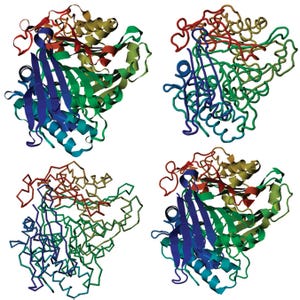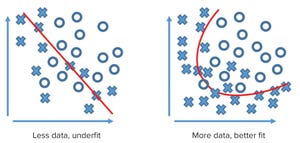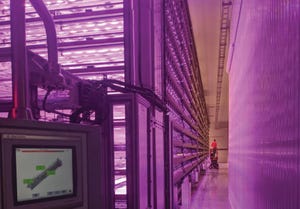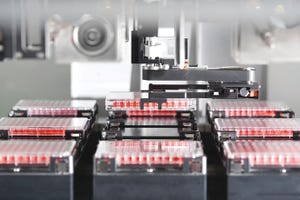When we founded BPI 20 years ago, already there were murmurs about the “death of print” in the publishing industry. And it’s true that in the ensuing decades, many publications (especially newspapers) have gone fully digital to save money and stay in business. But in every survey we’ve run over the years, the majority of our readers always have preferred the print version of BPI. Our digital edition has increased in popularity steadily — probably as older generations slowly give way to new ones in the biopharmaceutical industry — but only recently has it drawn roughly even with the print option among our readership and advertisers.
Meanwhile, our parent company has joined many others in seeking ways to incorporate both social and environmental sustainability concepts into how it does business. And as an outdoorsy, animal-loving, tree-hugging Oregonian, I’m much pleased to see this evolution. The subject of sustainability has been dear to my heart since I first learned about it. Over a decade ago, I pushed...
https://www.istockphoto.com
In January 2022, after months of proceedings and years of speculation, a jury found Theranos founder Elizabeth Holmes guilty of conspiracy to commit fraud and multiple charges of wire fraud (
1
). The trial of her former business partner Ramesh (also known as Sunny) Balwani began in March 2022. Theranos, a private medical device company in the healthcare sector, aimed to change the face of blood testing through benchtop in vitro diagnostics (IVDs) that were rapid, highly sensitive and specific, and required only small amounts of blood. It failed to achieve those goals.
Although it is an unfortunate fact that many biotechnology companies fail to achieve their underlying healthcare objectives before funds are exhausted, whether due to scientific or human failures, the story of Elizabeth Holmes and Theranos has captured the public’s imagination. It serves as a cautionary tale for healthcare investors and management. The financial rise and fall of the company were dramatic (the com...
https://www.istockphoto.com
In response to increasing demands for expedited availability of biotherapeutics around the world — and with the ultimate goal of patient benefit — health authorities have developed accelerated regulatory pathways to reduce development timelines to product licensure. Because of the complexity and unique nature of each program and product modality, some solutions must be worked out case by case between sponsors and regulatory agencies.
On 13 October 2020, CASSS–Sharing Science Solutions presented a virtual session overviewing currently available regulatory pathways in the United States, Europe, and Canada and general considerations for accelerated product development. Health-authority representatives shared experiences with reviewing requests and submissions under expedited programs. Presenters also provided examples and case studies for different therapeutic modalities to illustrate the applicability of expedited programs. Topics of discussion included comparability assessment, ...
Hamster phospholipase B-like 2 (PLBL2) is a host-cell protein (HCP) associated with Chinese hamster ovary cell systems used to express monoclonal antibodies
. PSI, THE ONLINE PROTEIN MODEL PORTAL (
HTTPS://WWW.PROTEINMODELPORTAL.ORG
)
Although biomanufacturing processes are designed to generate highly pure drug substances, some host-cell proteins (HCPs) copurify with target proteins and thus remain in finished drug products. Biopharmaceutical developers are keenly aware that such impurities must be minimized to protect patients. HCPs can activate several kinds of immune responses in treated patients, including production of antidrug antibodies and induction of cross-reactivity with therapeutic proteins (
1–5
). HCPs also can diminish drug efficacy, potency, and/or stability (
6, 7
). Thus, regulatory guidances such as ICH Q6B require developers to identify HCPs and related contaminants that could end up in a drug substance, then monitor their removal during purification processes (
8
).
It’s generally bel...
Some people have found significant disillusionment regarding artificial intelligence’s (AI’s) limitations in application. For example, mass-media productions (e.g.,
Ex Machina
) encourage the goal of achieving
general AI
or
super AI
, which supplies comprehensive, self-instituted results. In truth,
narrow AI
— which addresses only one task and provides specific results — is growing rapidly, both in power and number of applications (
1
). Although many different modeling methods remain dominant, AI is providing significant and increasing value in drug discovery, process development, transfer, and manufacturing (
2
).
In general, past renowned failures of AI applications have not resulted from limitations in algorithms. Disillusionment with AI, mainly because of limitations in supporting technologies, led to the “second winter” of AI between 1987 and 1990 (
3
). Over that period, application success was impeded by the slow speed, low capacity, and poor approaches to data handling and the limitations i...
GravityFlow automated multilayer vertical farm systems at an Intravision Greens facility in Niagara, Canada.
HTTPS://WWW.INTRAVISIONGROUP.COM
The application of plant-based systems to produce biopharmaceuticals for human and veterinary indications is a rapidly expanding field. Available systems range from stable transgenic root-cell culture to transient expression in whole plants. Products that have been expressed include monoclonal antibodies (MAbs) (
1
), subunit vaccines (
2
), virus-like particles (VLPs) (
3
), specialty enzymes (
4
), and structural proteins such as collagen (
5
). “Traditional” bioproduction platforms such as Chinese hamster ovary (CHO) cells,
Escherichia coli
, and
Pichia pastoris
have long histories of patient safety and regulatory acceptance. Novel systems based on cells from insects (transfected with baculovirus), transgenic animals, and plants are quickly accumulating the clinical safety data required to provide similar confidence for use (
6
).
The State of Plant-Based Pro...

 +1
+1Plastics have been used for decades in container–closure systems (CCS) for drugs and in single-use (SU) manufacturing equipment for biopharmaceutical processing. Biomanufacturers must comply with national and international laws and regulations that require proof that use of such polymeric materials is safe (
1, 2
). That necessitates testing for potential biological responses and interactions with drug substances. Comprehensive extractables and leachables (E&L) studies also are required for potential release of undesired compounds from polymers.
Extractables
tests are performed on materials under laboratory conditions that accelerate or exaggerate normal use conditions (
3
). These tests provide a comprehensive overview about compounds (extractables) that could be released into a liquid (e.g., drug product) that comes into contact with the material. Results are used for materials risk assessment and are the basis for the design of a targeted leachables study.
The aim of a
leachables study
is to detect ...

 +4
+4Compared with small molecules and other biopharmaceuticals, advanced therapies typically have more complex mechanisms of action and therefore more complex testing requirements. These requirements also change over time as innovators, testing organizations, and regulators apply recent learnings to current projects.
When developing a novel cell or gene therapy it is therefore crucial to have a robust, flexible plan for testing your drug. This plan must be sufficient for proving that your drug meets safety standards and other benchmarks, and ultimately, for gaining regulatory approval.
This article presents the challenges involved with regulatory testing for cell and gene therapies such as the complexity of regulatory requirements, short timelines, and capacity limitations. It also describes how innovators and testing organizations can address these challenges when taking a drug from bench to clinic, citing the viewpoints of regulatory and testing experts from WuXi Advanced Therapies, a company which offers i...
A pharmaceutical’s approval for commercial distribution is contingent on submission of pharmacological and toxicological safety data as defined by regulatory agencies such as the US FDA and ICH. Guidances state that such data can come from in vivo or in vitro studies. The current paradigm works well for collecting critical data about, e.g., a drug’s pharmacological effects and mechanism of action (MoA). However, increasing evidence points to current methods’ inadequacy for predicting a drug’s risks to human patients. Such limitations can increase risks for drug-program attrition.
The push to reduce animal use during toxicity studies has spurred on advances with in vitro technologies, including iPSCs, 3D tissue cultures (organoids), microphysiological systems (organ-/tissue-on-a-chip systems), in silico predictive tools, and quantitative structural activity relationship (QSAR) models. Those are considered to be
new-approach methodologies
(NAMs). Regulatory agencies often evaluate in vitro NAMs for predic...













